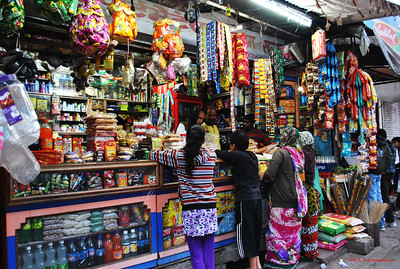When Manmohan Singh launched economic liberalisation in 1991, India was the world’s biggest beggar for aid. Today India is a net aid donor, having committed $30.6 billion to Asian neighbours and Africa.
In 1991, India’s capita income was just $360 a year, having been overtaken by several “miracle economies” of Asia growing at 7% per year or more. Three decades later, before Covid hit. India’s per capita income was up to $2,100. GDP had grown at 7% for two decades, making India a miracle economy too.
Back then, the green revolution had made India self-sufficient in normal monsoons but still dependent on food aid during droughts. Today India is a net food exporter even in droughts, and the world’s biggest exporter of rice.
In 1991, India was a leader of G-77 (group of poor countries constantly demanding more concessions to develop). Today India is in the T-20, the top 20 economies that lead the world. Hence, the US now backs it for permanent membership of the UN Security Council.
Data controversies have muddled estimates of poverty reduction. The World Poverty Clock, a Vienna-based think tank, estimated in 2018 that India’s poverty rate was just 5.3%. The UNDP estimated that 271 million Indians were lifted out of extreme poverty between 2005-06 to 2015-16. Other estimates are much lower, but doubtless hundreds of millions came out of poverty before Covid struck.
A million statistics cannot convey the qualitative transformation of life from the licence-permit raj of the Nehru-Indira era. Central planning then claimed India was best off when people had no power to decide what to produce, consume, or import — that was supposedly best left to benevolent socialist rulers who knew what was good for people better than they knew themselves. You could not produce or import anything without a licence. Raising productivity was not rewarded but punished with jail for exceeding licensed capacity.
This made almost everything scarce in ways Indians under 45 years will scarcely believe today. In the 1970s, one had to queue up for seven years for a car and nine years for a scooter. Government-owned HMT had a monopoly on watch production, and getting a watch was so difficult that it was often part of a bride’s dowry. I had to pull strings to get Amul milk powder for my first child. Cement was so scarce you had to wait in queues to get batches that in time might suffice to build a house — if the first batch had not gone bad already. All in the public interest, you understand.
The licence-permit raj meant that till 1980 India grew at 3.5% annually, half the rate of outward looking market-oriented Asian tiger economies. India patronisingly pitied the tigers (like Singapore) for being western puppets. Alas, the puppets grew richer than their colonial masters, while India remained poor.
Today, socialists still moan about 30 years of reform saying it neglects inequality. They forget that Indira Gandhi in the 1970s imposed income tax of 97.7%, plus a wealth tax of 3.5%. A Finance Ministry spokesman said at a post-budget press conference that if a rich man invested all his wealth in National Savings Certificates at 7% interest, the maximum he could earn after taxes was Rs 25,000. In theory a socialist paradise had arrived. In fact, black money exploded, corporate honesty collapsed, crooks soared and the honest went bust. In three decades after independence, India’s poverty rate fluctuated with the monsoons but showed no improvement at all. Meanwhile the population doubled. So, the absolute number of poor people doubled, an outrageous consequence of Indira’s attack on crushing inequality. Alas, many leftists want to revive that approach.
Creeping reforms began in the 1980s but became official policy in 1991. Some say liberalisation went too far. No, it was only half-baked, maybe quarter-baked. The Heritage Institute’s Index of Economic Freedom puts India at just 121st in the world, in the category “mostly unfree.”
Yet half-baked liberalisation sufficed to produce 7% “miracle growth” for almost two decades. But since 2016-17 growth has decelerated from 8.3% to 7%, 6.1%. 4.2% and minus 7.3% in the Covid year 2020-21. India looked better after 25 years of reform than after 30.
Apart from incomplete economic reform, the greatest hurdle is a moribund police-judicial system that gives no real justice, prevents enforcement of contract (the heart of a market system), and permits gross misuse for political vendettas. Second, apart from a few centres of excellence like IITs, the educational system produces semi-illiterate schoolboys and unemployable college graduates, so beneath a thin veneer of world-class skills India is hollow. Third, business entry has been liberalised but not exit, checking the creative destruction needed for success. Without tackling these, India will not regain 7% miracle growth.
This article was originally published in The Times of India on 24 July 2021.
Read more: How to exit farming risk trap
Post Disclaimer
The opinions expressed in this essay are those of the authors. They do not purport to reflect the opinions or views of CCS.






